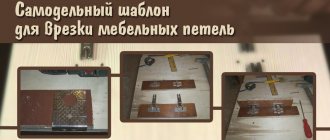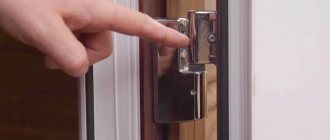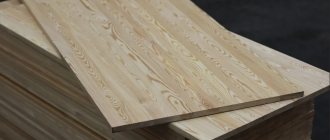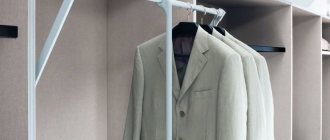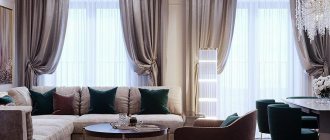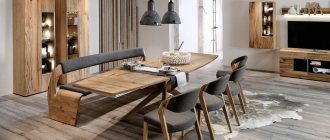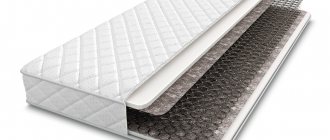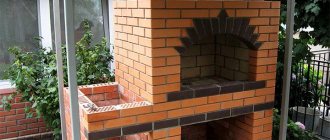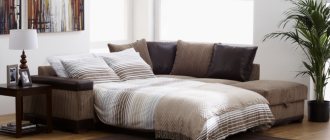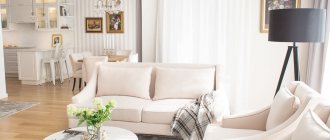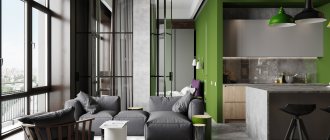Types of furniture hinges by design
There are many hinges and canopies used to attach a swing door to the frame of a cabinet or cabinet. Basically, in modern furniture production, four-hinged hinges , which allow the facade to be adjusted in three planes at once:
- higher lower,
- left/right,
- to/from the facade.
All of them consist of two interconnected parts - a bowl with an elbow and a strike plate . Often the strike plate is called a mounting or mounting plate. This article will focus specifically on four-hinged hinges.
Other types of furniture hinges can be combined into one large group as “bowlless” hinges.
piano hinges, card hinges, pin hinges, and heel hinges, known to everyone for fastening interior doors and facades in old furniture . They are rarely used in modern furniture. For example, piano, card and mortise hinges can be used to attach tabletops to the base, movable legs in book-tables. For ordinary cabinets, brass decorative hinges are used as additional decor.
Overhead hinges that do not require drilling of the facade . They come in handy when the thickness of the material chosen for the facade does not allow installing (embedding) a four-hinged hinge due to the depth of the bowl. The only drawback of such hinges is their rigid fastening, which does not allow adjustment in three planes, like four-hinge hinges.
Hinges for fastening specific facades . For example, prefabricated facades made of aluminum frames of different widths are installed on special hinges - you can purchase them together with the profile. Please note that, just like regular four-hinged hinges, they can be overhead or internal, designed for corner cabinets of 45, 135, 180 degrees and facades covering the end of the case.
Types of four-hinged furniture hinges
According to the design, according to the way the bowl with the knee is attached to the striker, four-hinge furniture hinges can be of three types:
- Slide-on—the parts of the loop are inserted into each other and connected using a fixing screw that has special notches, thanks to which it reliably “holds” the connection even in a weakened state. This type of loop is the most common.
- Clip-on - the parts of the loop are connected by simple snapping, without screws. The facade can be removed and installed without using any tools - just pull the latch. Clip-on hinges are also called quick-installation hinges.
- Key-hole – on the shoulder of the bowl with a knee there is a hole resembling a key hole in shape - a keyhole. The arm and bar are secured by passing the head of the fixing screw through this hole.
Regardless of the design, all of the above types are divided according to their purpose and installation method - what facade is used in the furniture and how it is attached to the body.
90 degree hinges
*The designation 90 degrees in this case is conditional, it is used to mark hinges that open at a right angle. In fact, the door travel is somewhat greater, reaching about 105-120 degrees when opening. Some manufacturers and sellers of accessories may label this type not “loop 90”, but, for example, “loop 110” - there is no mistake here.
The 90 degree overhead (external) loop has a straight “shoulder”, without bending. Used for facades that completely cover the ends of the side walls of the body (without taking into account the technological gap, which can be 1-5 mm).
Half-overlay (middle, half-outer) loop 90 degrees , the shoulder of the bowl with the knee can be distinguished by a medium bend. Rarely used. For example, in kitchen two-row horizontal cabinets for attaching the bottom door and in three-leaf wardrobes for attaching the middle facade.
The 90-degree inset (internal) hinge is distinguished by a large bend on the “shoulder”, due to which the inset door is carried out when opened outside the body. Rarely used. For example, in office furniture, in which the body is made of thickened 22 mm chipboard and the internal facade emphasizes this detail.
180 degree hinges
A straight (gauge) hinge for false panels is designed for attaching the facade to the sidewall, which is located in the same plane. Most often used in corner kitchens, when using the appropriate corner sink module.
The 165-degree carousel (crab, crocodile, transformer) hinge is recognizable by the characteristic complex shape of the bowl's elbow, which ensures that the door opens completely relative to the body - almost up to 180 degrees. It can also be invoice, semi-invoice and inlay. Differs in the shape of the shoulder.
Types of corner hinges
A 30-degree corner hinge “presses” the façade, located at an angle of 90+30 degrees relative to the body. It is most often used in beveled end cabinets of kitchen units or wardrobes. Installation angle – 120 degrees. Some manufacturers mark it by installation angle, i.e. called a 120 degree loop.
The 45 degree corner hinge is used in trapezoidal single and double door cabinets - for example, kitchen or dressing rooms. Similar to the previous type, it can be called by the angle of installation - a 135 degree loop.
An angular loop of 120-135 degrees most often serves as a connection between two facades, fastened together at a right angle of 270 degrees, which come off like an accordion. In this case, the door without a handle is attached to the body using a carousel hinge from the previous category.
Corner hinges with a negative opening angle are used extremely rarely, due to design features: end cabinets, as a rule, serve as the end of a row of furniture and it is more convenient to open the door from the other side. But there are projects in which it is more expedient to implement the opposite solution.
The photo shows the main types of standard furniture hinges, without closers , ensuring smooth closing. Hinges with closers are classified similarly - depending on the type of facade and the installation angle relative to the body. They differ in appearance from standard ones only in the shape of the shoulder, inside of which a special movement-absorbing mechanism is built. Also, the closer may not be built-in, but overhead - as, for example, a manufacturer such as Blum offers. But the bulk of offers on the market still do not imply the possibility of improvement. Therefore, if you are determined to install facades with soft closing, without annoying knocking, purchase fittings with closers right away. True, it costs a little more. Before purchasing, I recommend that you read the review on furniture hinges with closers.
A separate group of furniture hinges is for glass facades, with and without drilling glass. Review on glass hinges here.
What types of hinges are there for kitchen cabinets?
Among the entire range of designs
There are only 2 types.
- Hinged (piano and card). These were the very first to appear; they were used back in the last century, but are practically not used in modern headsets. But when assembling antique retro or vintage furniture, they may just be needed.
- Four-jointed. Their design differs from previous conventional ones in that they can be adjusted in several places, ensuring free opening/closing of doors.
Four-hinged ones are considered more modern and reliable.
Four-hinged design device
Hinges according to door position and fastening method
There are four-hinged ones:
- semi-overhead.
The semi-overlay allows only partially covering the body of the furniture set. It has a slight bend that creates a gap between the sashes, which allows you to open two adjacent sashes at the same time. Used in intersectional fastenings of kitchen furniture, for example in a three- or two-door cabinet;
- overhead (external) are a hinge mechanism that allows the doors to open 900, actually 105 degrees.
They are most often used for fastening doors in kitchen units. They allow the doors of cabinets and sections to be tightly closed, covering the body on both sides, and serve for a long time without breakdowns;
- internal (inset).
They have a large bend, which helps to move the inset door outside the body when opening. Rarely used for attaching heavy doors to chipboard cabinets. They allow you to sort of recess the doors when closed behind the cabinet body;
- adit (straight)
are designed for attaching the front part to the sidewall of false panels.
Often used in corner sink cabinets.
Corner
For installation in corner floor and wall cabinets, hinges are needed that allow the doors to be opened at different angles.
Hinges depending on the opening angle and purpose in the table:
| Angle degree | Where are they used? |
| 30 | in sloping end cabinets |
| 45 | in trapezoidal kitchen cabinets, both single and double doors |
| 120-135 | for connecting two facades that come off like an accordion |
| counterclockwise opening hinges | used in rare cases when necessary |
Carousel (inverse) loops deserve special attention
. Thanks to their design, they allow doors to open up to 180 degrees.
They are not used so often in corner cabinets.
For cabinets with vertical opening
These are mezzanine loops. Their main element is a spring, they are installed on the doors of hanging cabinets with a vertical opening.
For glass doors
Depending on the material on which they are installed, we can separately distinguish those that are mounted on glass surfaces. Their main difference is the presence of a special decorative lining that masks the loop. True, at home it is quite difficult to drill a hole for them.
Hinges for glass doors are also divided according to the opening method, angle, etc.
Hinges can be equipped with additional elements - closers. Closers can be built-in or come separately as a set.
With door closer
With the help of a closer, the use of furniture will be more comfortable, silent, and they also help to extend the service life of furniture bodies, because... the doors will close smoothly.
